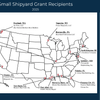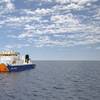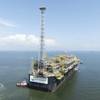Gas2 Gas-to-Liquids (GTL) Pilot Plant on Target
Scottish gas reforming company Gas2 is on track with the development of the next generation of natural gas-to-liquids (GTL) technology with a test program that is underway at its newly constructed pilot reactor plant.
The £5 million plant, located at the specialist petrochemical research Wilton Center, Teeside, has been designed to validate five years of laboratory testing and computational fluid dynamic modeling. It has been built on time and on budget and is on schedule with an extensive test program that will continue throughout 2013.
Aberdeen-based Gas2 has developed a catalytic ceramic based porous membrane (pMRTM) that is used in its gas reforming (Syngas) reactors and fluid forming (Fischer Tropsch) reactors to create liquid hydrocarbons. This is an alternative technical solution to other developers of small to medium-scale GTL -. Gas2 is the only gas reforming company to have developed its own complete stand-alone GTL solution on this scale, without being tied to any particular larger industrial partners.
The Gas2 Syngas reactors have been commissioned and are operating successfully, producing upper quartile gas conversions in a single pass and through-puts within a narrow 2:1 hydrogen to carbon monoxide output ratio. The Fischer Tropsch (FT) reactors will be commissioned during summer 2013.
Mike Fleming, cofounder and managing director of Gas2 said, “The results from the pilot plant are encouraging and we are optimistic about continued success as we move through the scale-up process. Operational targets have been met so far and we expect to have completed the test program and to announce plans for commercialization later in the year.”
Gas2’s proprietary technology enables the conversion of natural gas to liquid hydrocarbons more economically and cleanly than has previously been possible with conventional large scale GTL technologies.
The Gas2 approach is expected to result in considerably lower capital (CAPEX) and operational (OPEX) expenditure and a smaller environmental footprint compared to conventional GTL technologies, the company said.
According to Gas2, applications for the GTL technology include:
•stranded gas: transforming the economic viability of smaller, more remote gas reserves as well as shale and unconventional reservoirs;
•offshore ‘associated’ gas: offering a gas disposal solution for unwanted gas thereby preventing flaring and enabling the development of remote oilfields where flaring is prohibited and /or where gas reinjection wells are expensive or detrimental to reservoir performance;
•gas conversion to alternative end products including gasoline, diesel, waxes, ammonia, methanol, hydrogen and ethylene for industrial use.
www.gas-2.com














